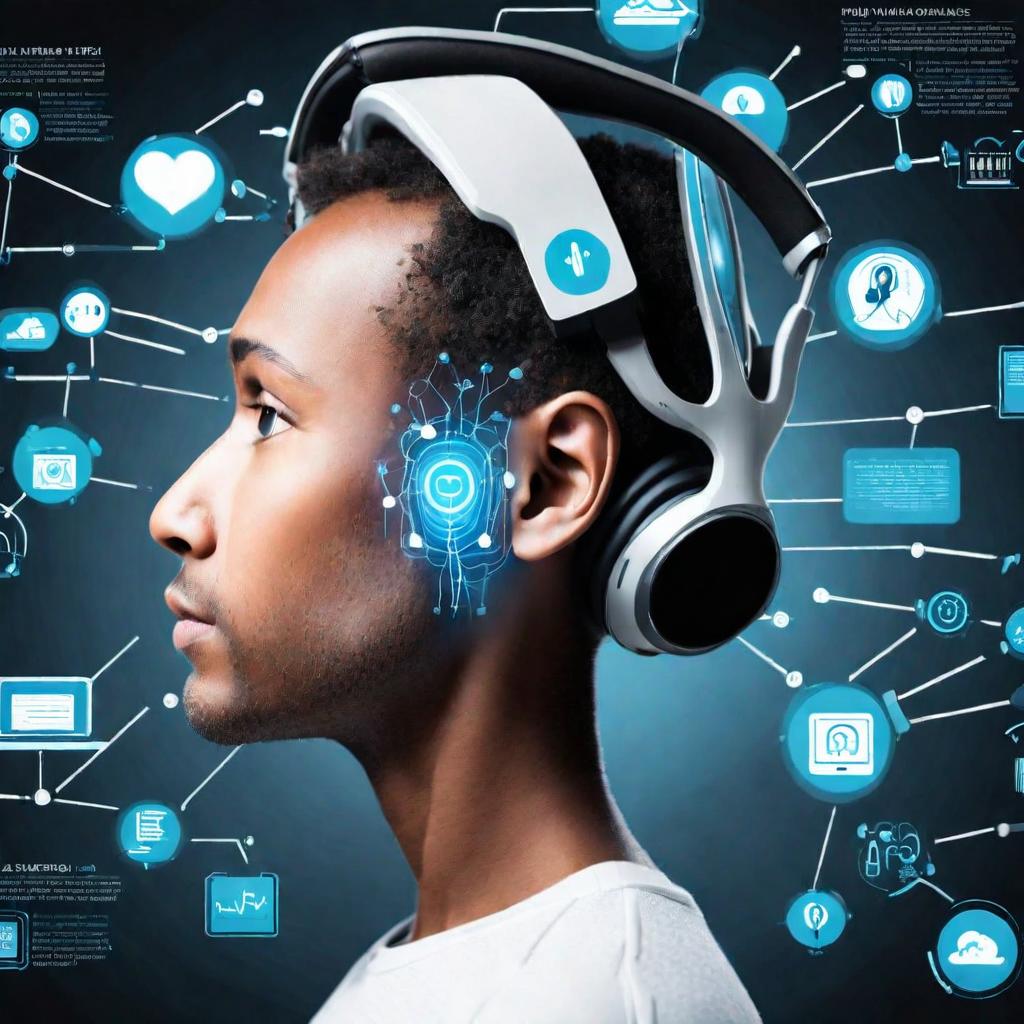
Health and Wellness
How Technology is Impacting Our Mental and Physical Health: Benefits and Risks


DINKAR
10/28/2024
Introduction
In today’s digital era, technology is woven into nearly every aspect of our lives. From work and social interactions to relaxation and fitness, our reliance on smartphones, computers, and smart devices is undeniable. But while technology brings convenience, it also affects our mental and physical health in complex ways. This article explores both the positive and negative impacts of technology on our well-being and provides actionable tips for maintaining a balanced relationship with our devices.
1. Positive Impacts of Technology on Health
1.1 Improved Access to Health Information
Technology has democratized health knowledge. Apps, websites, and wearable devices offer instant access to health insights, enabling people to monitor symptoms, learn about conditions, and make informed decisions about their well-being. Platforms like WebMD, MyFitnessPal, and Headspace bring valuable resources to people who might not otherwise have access.
1.2 Telemedicine: Convenient Access to Medical Care
Telemedicine, which rose in popularity during the COVID-19 pandemic, allows patients to consult doctors from home. This convenience reduces the need for in-person visits, making healthcare accessible, especially for those in rural or remote areas. Studies show that telemedicine has boosted patient engagement and improved adherence to treatment plans, supporting better health outcomes.
1.3 Physical Health Monitoring with Wearable Technology
Wearables like Fitbits, Apple Watches, and Garmin trackers help users monitor daily activity levels, heart rate, sleep quality, and more. These devices can encourage healthier habits by setting reminders to move, track workouts, and monitor sleep, empowering users to take charge of their physical fitness.
1.4 Mental Health Support through Apps and Online Communities
Mental health apps such as Calm, BetterHelp, and Woebot have revolutionized access to mental health resources. These apps offer tools like meditation exercises, cognitive behavioral therapy (CBT) techniques, and community support, making mental health care accessible to those who might be hesitant to seek traditional therapy.
2. Negative Impacts of Technology on Mental Health
2.1 Social Media and Anxiety
While social media connects people globally, it also has a dark side. The constant comparison, fear of missing out (FOMO), and pressure to project a perfect image can lead to anxiety, depression, and loneliness. Studies suggest that social media use, especially in teens, is linked to increased rates of depression and anxiety.
2.2 Sleep Disruptions from Screen Exposure
The blue light emitted from screens disrupts the body’s natural circadian rhythm, making it harder to fall asleep and enjoy restful sleep. Prolonged exposure to screens, especially before bedtime, is linked to insomnia, fatigue, and decreased productivity. Experts recommend limiting screen time at least an hour before bed to improve sleep quality.
2.3 Technology and Digital Burnout
The “always-on” nature of digital communication can lead to digital burnout, where constant notifications, emails, and work messages make it hard to disconnect. This unending connectivity can lead to mental fatigue, stress, and even burnout, impacting productivity and job satisfaction.
3. Physical Health Risks of Technology Overuse
3.1 Sedentary Lifestyle and Its Health Risks
With many jobs now being remote, people spend more time than ever sitting in front of computers. A sedentary lifestyle, coupled with excessive screen time, is associated with weight gain, poor cardiovascular health, and an increased risk of chronic diseases like diabetes. Physical inactivity can also lead to muscular and skeletal issues, particularly in the neck, back, and shoulders.
3.2 Eye Strain and Vision Problems
Extended screen time can cause digital eye strain or computer vision syndrome, characterized by dry eyes, blurred vision, and headaches. Research suggests that about 50-90% of computer users experience some form of eye strain. Following the 20-20-20 rule (looking 20 feet away for 20 seconds every 20 minutes) can help reduce eye strain.
3.3 “Tech Neck” and Poor Posture
“Tech neck” is a condition that results from bending the head forward to look at screens, causing strain on the neck and spine. This forward head posture can lead to chronic pain, muscle stiffness, and even nerve damage over time. Standing desks and posture-correcting devices are recommended for those working long hours on computers.
3.4 Reduced Physical Activity among Children and Adolescents
For children and teens, excessive screen time can impact physical development. Time spent on screens often replaces time for physical activities, leading to a sedentary lifestyle from a young age. This can contribute to obesity, poor physical fitness, and social isolation.
4. Strategies for Managing Technology’s Impact on Health
4.1 Set Screen Time Limits
Implementing screen time limits can help balance online and offline life. Many devices have built-in tools to track and limit screen time, which can encourage taking breaks and reducing overall usage. For example, Apple’s Screen Time and Android’s Digital Wellbeing can help monitor screen time across apps.
4.2 Practice Digital Detox
A digital detox involves setting aside specific times or days to unplug from devices. Taking periodic breaks from technology can help reduce stress, improve focus, and provide a chance to reconnect with physical activities, nature, and in-person relationships.
4.3 Invest in Ergonomic Furniture
Ergonomic chairs, adjustable desks, and monitor stands can reduce the physical strain of prolonged screen time. Ergonomic furniture supports a healthy posture, reduces back and neck strain, and promotes overall comfort, making long hours at the computer more manageable.
4.4 Engage in Physical Activities and Outdoor Time
Regular exercise is essential for countering the sedentary effects of prolonged technology use. Aiming for at least 30 minutes of physical activity each day can help improve cardiovascular health, relieve stress, and promote better sleep.
4.5 Use Apps for Healthy Technology Habits
Several apps, such as Forest (for focus) and RescueTime (for time management), are designed to foster healthier relationships with technology. They provide reminders to take breaks, limit social media use, and encourage time away from screens, helping users maintain a balanced digital life.
Conclusion
Technology is both a blessing and a challenge for our mental and physical health. By providing better access to healthcare, fitness tracking, and mental health support, technology has the potential to significantly improve our well-being. However, the negative effects—such as digital burnout, social media anxiety, and physical health risks from prolonged screen time—cannot be ignored.
Striking a healthy balance with technology is key. Setting boundaries, practicing digital mindfulness, and prioritizing physical activity can help us enjoy the benefits of technology while minimizing its potential harms. As we continue to integrate tech into our lives, being mindful of our habits will empower us to use technology in a way that enhances, rather than detracts from, our health and happiness.